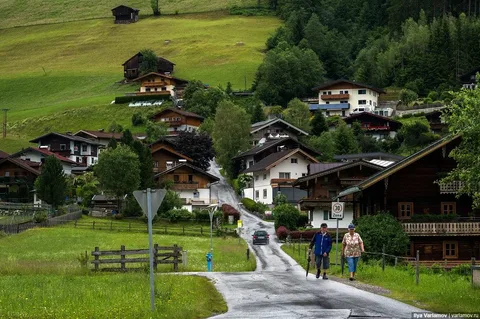If you’re living in a rural area, it can be challenging to get fast Internet. The lack of high-speed options in these areas makes it hard for people to do their jobs and stay connected with friends and family.
There are a few different ways people can get rural Internet service. Some are faster and more affordable than others.
Dial-up
Dial-up Internet is one of the oldest forms of consumer Internet access and is still used by millions of people. It works by sending signals over the standard phone lines to connect to your internet service provider (ISP). The main difference between dial-up and DSL is that a phone line does not block DSL so that it can run faster than dial-up.
The cost of dial-up is usually low, and it may even be free in some locations. However, it is also the slowest connection and is not a good choice for streaming video or playing modern online games.
While it is not available in every community, it can be a great option for many rural areas that do not have broadband or cable options. For instance, it is common in remote Alaskan towns where satellite and fixed wireless connections are the only internet options.
This method of getting internet is popular with businesses because it provides an inexpensive and easy way to check email or run a website without needing to install additional equipment. It is also a good choice for individuals who only use the Internet a few times a month or in areas without Internet service providers.
Dial-up has been in decline since 2000, but a large percentage of rural users still use it to access the internet. Compared to urban and suburban communities, rural areas saw their dial-up usage drop by ten percentage points between 2000 and 2003.
The reason that dial-up has fallen out of favor is that it is not as fast or as reliable as other types of internet connections. This is because dial-up does not have the bandwidth to support the high-bandwidth requirements of newer computer programs, such as operating systems and antivirus software. It also does not support many of the features that broadband does, such as LAN connectivity and Wi-Fi capability.
It also uses a limited amount of data and can be expensive to maintain. It is also difficult to set up, and it is not an ideal solution for homes that have multiple devices.
DSL
DSL (Digital Subscriber Line) Internet service is a popular option for people living in rural areas. It’s available in many locations, and it’s a more affordable option than cable or fiber.
DSL uses your existing telephone lines to simultaneously transfer digital data and conventional phone signals. This works because telephone lines are capable of carrying thousands of frequencies, but only a few of them are used by phones. DSL re-uses these frequencies to create a broadband connection that’s much faster than dial-up and doesn’t interfere with your phone calls.
You can find DSL networks from multiple providers, but the one you choose depends on your needs and preferences. It’s important to check their performance and ratings before signing up.
DSL is a great choice for homes with multiple devices and families that want fast Internet. It’s also an excellent choice for businesses that need to stay connected to their networks.
DSL connections are typically very affordable, but they can also be pricey if you have a lot of data to use. In some cases, your ISP will limit the amount of data you can use per month, which can help keep costs down.
To connect to the DSL network, you need a modem. These are available from the internet provider or phone company. The modem is attached to your computer and transmits data over the DSL network.
A DSL modem can be found in a number of different forms, and it’s possible to combine it with an optional router as well. This can simplify the setup process and make it easier to manage your local network.
You can get DSL services from a variety of companies, including CenturyLink, Xfinity, and Viasat. We like Xfinity because it’s the fastest option in the area and has a good price point.
Another DSL option is fixed wireless home Internet, which delivers high-speed Internet to your home through cell towers. It’s a good option for rural areas that don’t have phone service, but it’s not the most reliable.
DSL technology was first developed in the 1980s by Joseph Lechleider of Bellcore, the research division of the Bell telephone company. It was designed to compete with cable by using telephone lines for high-speed internet.
Fixed Wireless
One of the most common ways people get Internet in rural areas is fixed wireless Internet (FWI). This type of service uses radio waves to transmit data between two points, and it’s used mostly in rural or remote areas where traditional wired lines can’t be run.
The technology is also a great option for small businesses that aren’t in the right spot to install fiber. It allows service providers to save time and money by avoiding the need for deploying new cables in remote areas, according to Midco, a provider that serves 385,000 customers across South Dakota, North Dakota, Minnesota, Kansas, and Wisconsin.
In addition to providing a reliable means of delivering broadband to homes and businesses, fixed wireless technology can help ISPs expand their coverage. It’s especially useful in remote areas that are hard to reach with fiber because it requires fewer telecommunication lines than fiber.
Another great thing about fixed wireless is that it’s less likely to be disrupted by the weather. It’s also more resilient to damage, so it’s ideal for businesses that need to stay online regardless of the weather.
Depending on the service you choose, fixed wireless can also give you high speeds that are similar to DSL and cable. However, it’s important to note that these speeds can be limited if you exceed your data allowance, so it’s best to discuss this with your service provider before signing up.
Many people enjoy gaming in their spare time, and a good fixed wireless connection can make it easier to play games online. It will also decrease lag, which can be frustrating when playing online multiplayer games or watching 4K shows.
While many people have the misconception that fixed wireless is slow, it’s actually one of the fastest Internet options available for those living in rural areas. It’s also easy to set up and can be quite affordable.
In addition to speed, fixed wireless is also more reliable than satellite internet. It’s also much faster than dial-up, and it doesn’t have any problems with throttling or slowing down.
Satellite
Satellite internet is a great option for rural residents because it is available virtually everywhere. It is also less likely to experience network outages than other terrestrial internet types, such as cable or DSL, thanks to its use of a completely wireless signal.
While the cost and availability of satellite service are still challenging for many people, it is becoming increasingly viable as more satellites are launched into space to improve coverage. However, it is important to remember that satellite internet has a high latency (the time it takes for data to be transmitted from the internet service provider to the end-user), and it can’t compete with wired alternatives such as DSL or fiber optics.
HughesNet, Viasat, and Starlink offer satellite internet and are available to most rural areas in the United States. HughesNet offers a 25 Mbps connection, fast enough for most users to search the web, pay bills, shop online, and stream movies and TV.
Viasat offers a similar plan but with a faster speed of 100 Mbps. In both cases, data limits are based on the plan you choose. Speeds are reduced to 1 to 3 Mbps when you exceed your limit.
Data caps for satellite plans are much lower than DSL, but they can be a problem if you regularly consume large amounts of data. If you are worried about running out of data, you can consider a plan that gives you extra data “tokens” in addition to your normal monthly allowance. These data tokens are often cheaper than a month of extra data, but the amount and price of these data tokens vary by provider.
Another option for rural internet is fixed-wireless internet, which is available from AT&T and many other providers. These connections require a direct line of sight to a transmitter, but they are often more affordable than satellite and are a good alternative for those who live in remote areas.
Finally, some companies, such as MConnect, offer satellite backhaul to help connect rural communities and businesses with wireless networks (cellular and Wi-Fi). This is an effective solution for providing high-speed Internet in areas that are not covered by traditional wired or cellular connections.










… [Trackback]
[…] There you will find 64210 more Information to that Topic: news969.com/how-do-people-get-internet-in-rural-areas/ […]
… [Trackback]
[…] Read More Info here to that Topic: news969.com/how-do-people-get-internet-in-rural-areas/ […]